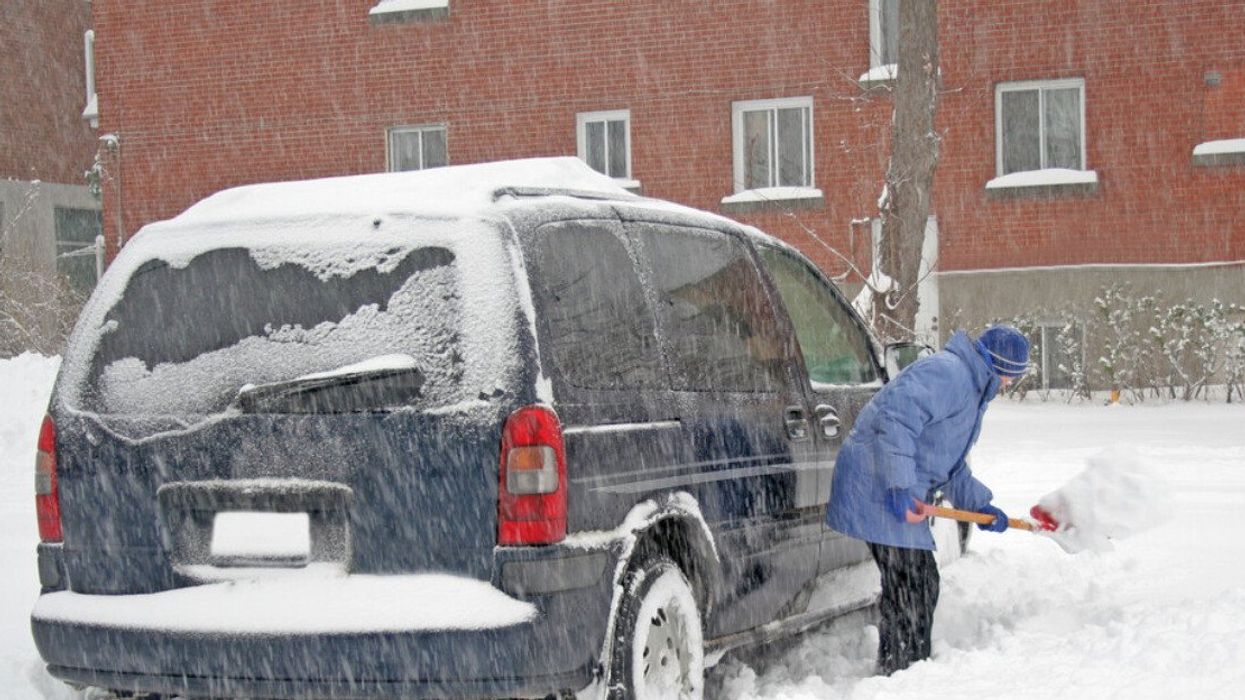When you should actually switch to winter tires in Quebec, according to a meteorologist
"Snow isn't the only factor that should determine when you put on your winter tires."

By law, drivers have until December 1 to install their winter tires.
It's that time of year again in Quebec when garages start filling up, tire ads take over the radio, and everyone debates when to make the switch to winter wheels.
By law, drivers have until December 1 to install them, according to the Government of Quebec, before they risk getting fined. But while that's the legal deadline, weather experts say you might want to roll them on a little sooner, even if the roads are still dry.
Here's why.
Snow is not the only factor
Environment and Climate Change Canada meteorologist Peter Kimball says that temperature — not snow — should be the main signal for drivers to make the switch.
"There are a few things to keep in mind," Kimball said in an interview with MTL Blog. "First, snow isn't the only factor that should determine when you put on your winter tires. Even if there's no snow at all, winter tires perform much better once the temperature drops."
He explained that tire performance depends largely on the average daily temperature, since the rubber in all-season tires stiffens in the cold. "When it falls below a certain point, winter tires grip the pavement much more effectively than all-season tires because of the compounds they're made with," he said. "I'm not a tire expert, but that's what the research shows. So temperature is as important as snow."
How temperature affects safety
According to Kimball, 7°C is a helpful rule of thumb — below that, winter tires begin to outperform all-seasons. "The colder it gets below that threshold, the bigger the difference in performance," he noted.
And temperatures often fall below that mark well before December comes around. "It's quite common for temperatures in Quebec to fall below 7°C throughout November," Kimball noted. "For example, last year in Montreal, the mean temperature was around 1.9°C on November 2 and 1.0°C on November 3. Temperatures fluctuate a lot, but there were plenty of days below that number during the month."
When asked if waiting until the last week of November might be too late, Kimball agreed.
When the first snow usually falls
Kimball also shared data on Quebec's typical first snowfalls and how they vary based on how far north you are in the province.
"Looking at the averages, Saguenay usually gets about 8 centimetres of snow in October, Quebec City about 3, and Montreal about 1.8," he said. "That means it's possible for Montreal to see a little snow by the end of October, though it's not guaranteed."
By November, though, snow becomes almost certain. "On average, Saguenay gets 46 cm in November, Quebec City 33 cm, and Montreal about 19 cm," he explained. "So most people in Quebec will see snow during the month of November."
What to expect this year
"As for this year, it's been very dry and relatively warm so far," Kimball said. "There's no snow in the forecast for anyone for the next little while. The next significant precipitation will likely come around October 20, but it will be rain. There could be a few flurries north of Montreal around October 24 or 25, but nothing major. So, for most of Quebec, we're looking at November for the first real snowfall — as usual."
That outlook lines up with MétéoMédia's latest seasonal forecast, which predicts a sudden drop in temperatures around mid-November and warns Quebecers to expect an early "weather shock" as the province transitions from mild to freezing conditions
So, if you've been wondering how long those summer tires can withstand the elements, you probably want to make your appointment sooner rather than later.
- Quebec grocery shoppers can get money back from a $500M bread lawsuit — even with no receipt ›
- Quebec's November weather forecast just dropped & it's bad news for anyone who hates winter ›
- Most Quebecers are still boycotting American goods but another country's brands are winning - MTL Blog ›
- Montreal just got a "freezing" weather advisory & it's officially time to get out your parka - MTL Blog ›
- Thousands of Montreal homes were broken into in 2025 — These are the most at-risk areas - MTL Blog ›
- Montreal could see its first snowfall before Halloween this year - MTL Blog ›
- Quebec's winter tire deadline is coming up but there are some exceptions to the rule - MTL Blog ›

